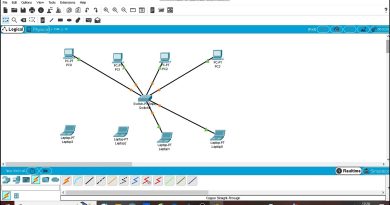COMMON NETWORKING PROTOCOLS
Introduction to the Network Protocol
Communication and the exchange of information are the most important and powerful skills in today’s modern world. Computer networking is the interconnection of multiple computers and devices by cables and satellites, allowing them to share information, resources, databases, and more regardless of the distance between them.
To ensure efficient and secure communication within networks, many protocols were designed. A protocol is a set of rules that define how communication occurs in a network.
Essentially, it allows connected devices to communicate with each other, regardless of any differences in their internal processes, structure, or design. We can easily communicate with people all over the world by using various network protocols, and thus it plays a critical role in modern digital communications.
Internet Protocol (IP)
Standardized by IEEE in 1974, this protocol is responsible for addressing and fragmenting data packets in digital networks. Its goal is to ensure the successful delivery of packets from source to destination. For this purpose, the IP specifies a format that defines the type of description of data packets called IP datagrams.
The first major version of IP is IPv4, and it was first deployed on SATNET in 1982. It uses a 32-bit address space. The latest version of the internet protocol, IPv6, uses 128-bit address space to create unique TCP/IP address identifiers.
The Transmission Control Protocol (TCP) is a standard that defines how to establish and maintain a network connection through which application programs can exchange data. It is used on the top of IP to provide reliable transmission of packets. TCP is a connection-oriented reliable protocol. Two devices need to establish a connection before start using TCP and sending the data. It also provides an acknowledgment to the sender device regarding the status of the data being sent. So in case, the sender receives a negative acknowledgment, it resends the data. During the data transmission, some data may get lost, or some error may occur. TCP provides an error-checking and recovery mechanism to handle such situations.
Because TCP uses the direct connection, TCP packet header must contain source and destination port information to exchange messages within a network. #internetprotocol #ipadress #internet #networking #informationtechnology #networkingskills
ipv4



